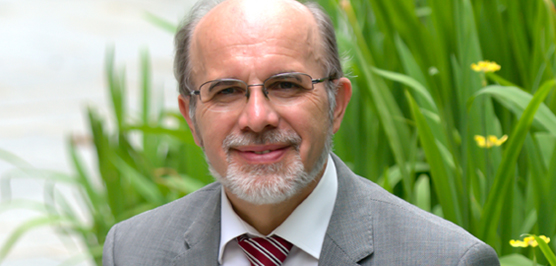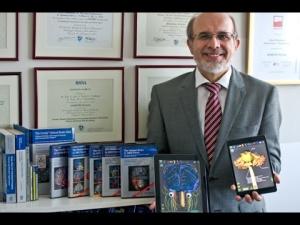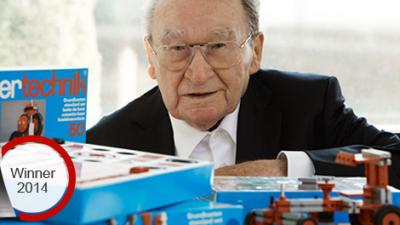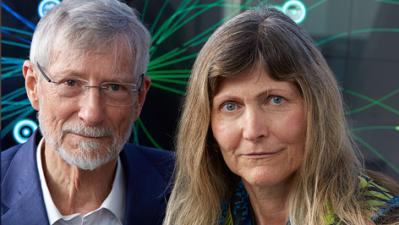Wieslaw L. Nowinski
3-D brain atlases for clinical use
Finalist for the European Inventor Award 2014
Nowinski's brain atlases are the result of combining multiple brain scans into a 3D representation. Extremely large amounts of data are involved. To deal with the tremendous complexity, Nowinski converted the scans into 3 000 pieces ; each individual piece is additionally compressed so that the atlases can stay affordable and will work even on a tablet.
Nowinski developed 34 different brain atlases that are used for research and education, as well as for the diagnosis, prediction and treatment of brain disorders such as Parkinson’s, stroke and psychiatric conditions. His two generations of atlases, “Cerefy” and “The Human Brain in 1492/1969 pieces”, are considered the most advanced and beautiful brain atlases on the market and have helped treat hundreds of thousands of people so far.
Societal benefit
Neurological disorders are responsible for an estimated 12% of deaths worldwide, and a large portion of these deaths are the result of cerebrovascular disease. As the planet's population ages, incidence of brain trauma and disorder will further increase. Consequently, the market for interactive technologies to explore and treat the brain will increase both in its size and its potential to dramatically improve and save lives.
Economic benefit
About 9 000 copies of the atlases have been distributed on CD-ROMs, and they are installed on 1 500 surgical workstations. Thirteen image-guided surgery companies have taken out licenses on the “Cerefy” atlases, including Medtronic, BrainLab and Elekta.
The Cerefy brain atlases operate in the market of neurosurgical products, which exceeded US $2.7 billion in sales in 2013. The growing burden of brain disorders and trauma on the healthcare systems of mature markets has compelled manufacturers to introduce cost-effective devices for the treatment of neurological disorders, creating a great deal of interest in equipment that assists in research and development.
How it works
Brain atlases, are the product of massive amounts of different kinds of images and data. Neuroinformatics data allow researchers like Wieslaw Nowinski to take a variety of brain scans and combine them to create sophisticated maps. However, Nowinski has gone a step further to generate three-dimensional brain models users can manipulate and navigate in different ways, tailoring different atlases for different purposes: from the exploration of the brain’s vascular system to the diagnosis of diseases such as Alzheimer’s.
Images of specific patients are “superimposed” on one of Nowinski’s atlases and the corresponding tissue structures are compared in the two cerebral hemispheres in order to pinpoint deviations from healthy tissue. Among many other uses, the atlases are employed to localise specific areas of the brain for deep brain stimulation, to identify and analyse structures in brain scans, to correlate brain anatomy with the resulting disorders, and for medical education and training.The inventor
Nowinski holds 32 patents, 15 of them in the United States and has written more than 500 scientific publications supporting his inventions. However, he is also an active entrepreneur. Nowinski has started up three high-tech companies in the medical technology sector; two more start-ups are in process. He has even presented to the Polish parliament on establishing a European Academic Incubator Network to support innovation and entrepreneurship in younger generations.
Did you know?
Because he didn’t want to expose other people to the time commitment and the health risks associated with intensive MRI scanning, Nowinski stepped in to have his own head scanned - sometimes for several hours at a time. Still, he was not satisfied with the aesthetics of his brain atlases, despite the crisp, high-quality brain scans they contained. He solicited the support of his wife and daughter, who worked to make the interface more engaging and the brain models more visually appealing. “This has made it nice and colourful”, says Nowinski. “It is a real family project”.
Media gallery
Contact
European Inventor Award and Young Inventors Prize queries:
european-inventor@epo.org Subscribe to the European Inventor Award newsletterMedia-related queries:
Contact our Press team#InventorAward #YoungInventors










